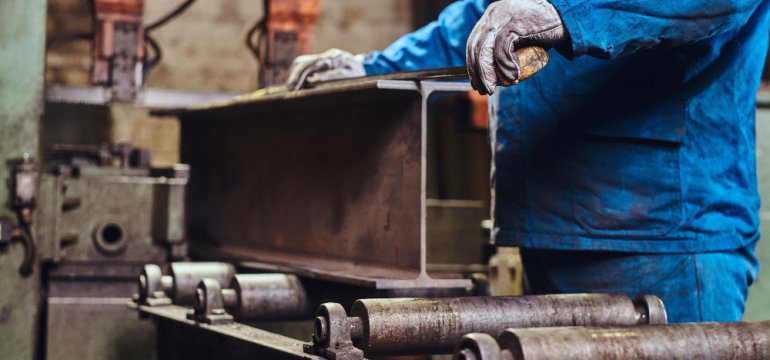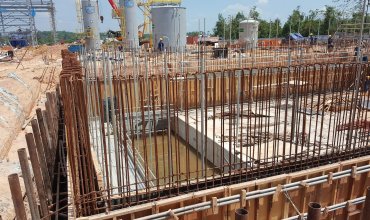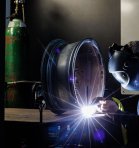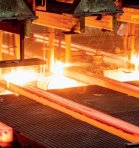Steel is one of the most important industrial materials in human history. From the Bronze Age to modern times, this durable and versatile material has played a key role in the development of technology and infrastructure. However, one aspect that makes steel so unique is its hardness. Steel hard ness is a concept that refers to the ability of steel to resist permanent deformation, cutting, or scratching under load. In today's article, we will discuss how exactly steel hardness is measured, why it is so crucial, and what methods and tools professionals use to evaluate this material property.
What is steel hardness?
The concept of steel hardness is technically complex, but a basic understanding of this characteristic is key to understanding how specific applications of steel can affect its selection in various structures and products. The hardness of steel is defined by its ability to resist permanent plastic deformation. In simple terms, it is a measure of how well steel can resist scratches, abrasion and other forms of mechanical damage.
Why is the hardness of steel important?
The right level of hardness in steel is not only crucial to its strength, but also determines its durability and ability to perform certain functions. All kinds of tools, mechanical parts, structural components and other products must meet certain hardness standards in order to function effectively and safely in various conditions of use.
Steel with the right hardness will be more resistant to abrasion and wear, which is important in the context of heavy industry, where components are often exposed to extreme working conditions. Hardness also has a direct impact on heat treatment, the hardening process and other methods of producing and improving steel.
Methods for measuring steel hardness
There are many methods for measuring steel hardness, and each has its own advantages and limitations depending on the application. It is crucial to understand which tools and techniques are most commonly used by professionals to correctly assess the properties of a given material.
Brinell scale
One of the oldest and most recognized methods for measuring the hardness of steel is the Brinell scale. This method is based on pressing a ball made of hardened steel or tungsten carbide into the material under test using a specific load for a specified time. This pressure creates an indentation, the diameter of which is then measured. Brinell hardness is calculated as the ratio of the load to the area of the indentation.
The main advantages of this method are the simplicity of implementation, the ability to measure the hardness of large and heterogeneous parts, and the versatility of application to different types of steel. However, the Brinell method can be less precise for very hard materials and for small and thin specimens.
Rockwell scale
Another popular method is the Rockwell scale, which is also widely used to assess the hardness of steel. In this case, the test involves pressing a diamond cone or steel ball into the surface of the test piece at a specified load. The depth of the indentation is measured directly, and the result is read on the Rockwell scale.
The Rockwell method is highly regarded for its speed and accuracy. It is also easier to use for serial quality testing in industry. However, hardness measurement by the Rockwell method has some limitations, especially for very thin or small specimens, where the depth of the indentation can affect the measurement results.
Vickers scale
The Vickers scale is another important method for measuring the hardness of steel, which is based on pressing a diamond pyramid indenter into the material under a constant load. The indentation area is measured with a microscope, and the results are converted to Vickers hardness.
This method is particularly useful for measuring the hardness of very thin layers, delicate materials or small samples. Its high precision is especially valued by research and scientific laboratories.
Importance of steel hardness in industry
The hardness of steel is of great importance in many industries. It is a key parameter that determines the selection of the right type of steel for specific applications. Industry uses this knowledge to preferentially select and use materials with the right parameters in structures, machinery, tools and many other products.
Steel in construction
In construction, high hardness steel is essential for the longevity and safety of bridges, skyscrapers, road infrastructure and many other structures. Resistance to abrasion, corrosion and mechanical loads are key here. Adequate steel hardness allows for structures that can resist the effects of extreme environmental conditions, ensuring safety and durability for decades.
Steel in automotive
In the automotive sector, selecting steels with the right hardness is crucial for the production of automotive parts, which must meet stringent quality standards. From the body to internal engine components, the hardness of steel determines its durability, wear resistance and ability to absorb energy in the event of accidents.
Steel in tool manufacturing
Industrial and hand tools need to be made of materials with high hardness to withstand demanding working conditions. That's why steels with the right hardness are chosen for the manufacture of drills, knives, saws, dies and many other tools. Hardness is crucial for keeping cutting edges sharp and for the longevity of tools.
Steel in the energy industry
The energy industry requires steels of exceptional hardness to withstand extreme conditions such as high pressure, temperature and aggressive chemical environments. Steel pipes, pressure vessels, turbine components and other components must be made of materials that ensure the safety and efficiency of energy systems.
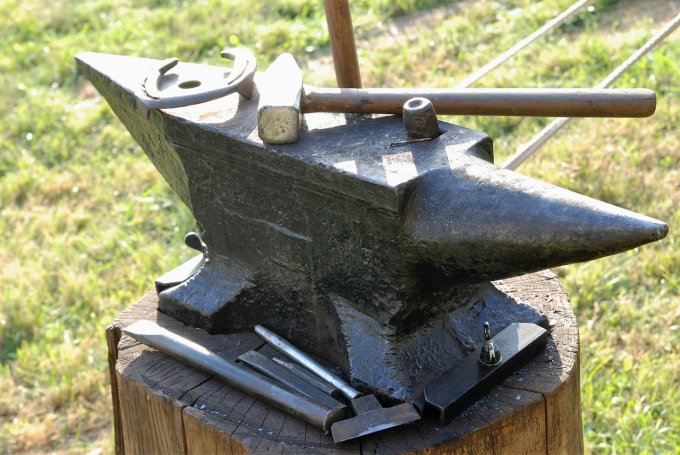
Steel processing techniques vs. hardness
Steel processing processes have a huge impact on the final hardness of steel. There are many techniques that are used to improve this material property. Understanding these methods is crucial for steelmakers and users who want to tailor the material to their specific needs.
Hardening and tempering
Hardening is a key heat treatment process that involves heating the steel to a high temperature and then rapidly cooling it in water, oil or air. This process increases the hardness of the steel by changing its crystal structure. After hardening, steel is very hard, but also brittle, so it is often subjected to tempering - a process of reheating to a lower temperature and slow cooling, which reduces brittleness while maintaining high hardness.
Machining
Various machining techniques, such as turning, milling and grinding, can also affect the hardness of steel. These processes can create stresses on the surface of the material, which in turn can lead to surface hardening. These methods are often used to improve the strength and hardness of parts exposed to abrasion and mechanical damage.
Riveting and calibration
Riveting is a mechanical surface treatment process that involves crushing the surface of steel by rolling it with balls or rollers. This process leads to surface hardening by creating compression on the material's surface. Calibrating is a similar technique that involves fine machining of the steel on the final dimensions, which can also increase surface hardness.
Introduction of hardness standards
In Poland, as in the rest of the world, the introduction and adherence to steel hardness standards is key to ensuring product quality and safety. These standards establish what hardness values are required for a given type of steel depending on its intended use.
Polish Committee for Standardization (PKN)
The Polish Committee for Standardization (PKN) plays a key role in determining hardness standards for various types of steel used in domestic industry. Standards such as PN-EN ISO 6506 (Brinell), PN-EN ISO 6508 (Rockwell) and PN-EN ISO 6507 (Vickers) are widely used in heavy industry, construction, automotive and other industries.
European standards vs. local specifications
European standards are often introduced and adapted at the national level. This allows Polish companies to produce steel to the highest standards while ensuring compliance with international procedures. This is crucial for competitiveness in the global market and for exporting high-quality steel products.
The role of testing laboratories
Testing laboratories are an important element in the process of ensuring compliance with steel hardness standards. They have the facilities and expertise to measure the hardness of various steel alloys according to established standards. These laboratories play a key role in quality control and in the research and development of new materials with even better mechanical properties.
Future technologies and steel hardness
Developments in technology are having a tremendous impact on methods for testing the hardness of steel and for developing new alloys with even better properties.
Nanotechnology
Nanotechnology, with its ability to manipulate materials at the atomic level, is opening up new possibilities for improving the hardness and strength of steel. The use of nanostructures can lead to the creation of steels with exceptional mechanical properties that are superior to traditional alloys.
3D printing
3D printing technology is also having a revolutionizing effect in the steel industry. Thanks to the capabilities of metal printing, it is possible to create complex shapes and structures that were previously impossible to produce. This method, combined with precise hardness measurements, makes it possible to create customized components with optimal mechanical properties.
Summary
Thehardness of steel, as a key material property, is of great importance in various industries. From construction to automotive to tool manufacturing, the right level of hardness determines the strength, durability and safe use of steel products. Thanks to various methods of measuring hardness, such as the Brinell, Rockwell and Vickers scales, it is possible to accurately determine material properties.
The development of steel processing techniques and the introduction of quality standards by organizations such as the Polish Committee for Standardization make it possible to produce high-quality steel that meets the demands of modern applications. Also, technologies of the future, such as nanotechnology and 3D printing, are opening up new opportunities for the steel industry, making it possible to create materials with even better properties.
Steel remains an indispensable material in many sectors of the economy, and its hardness is one of the most important parameters that determine its use and performance. With continued research and innovation in production technologies, steel will continue to play a key role in industrial and technological development.


